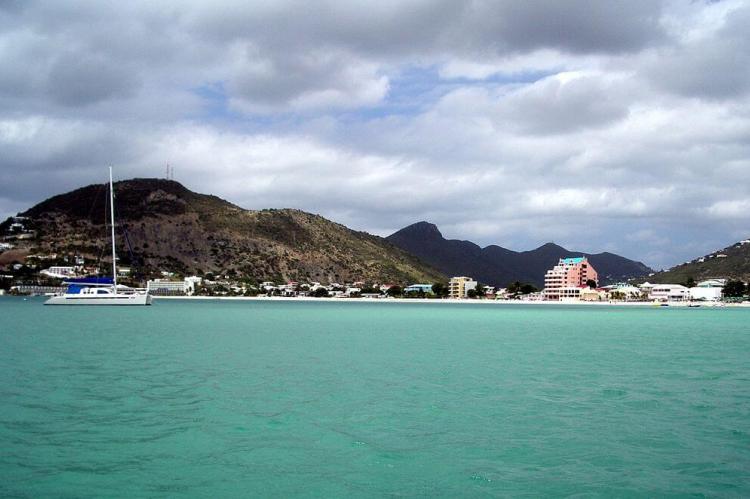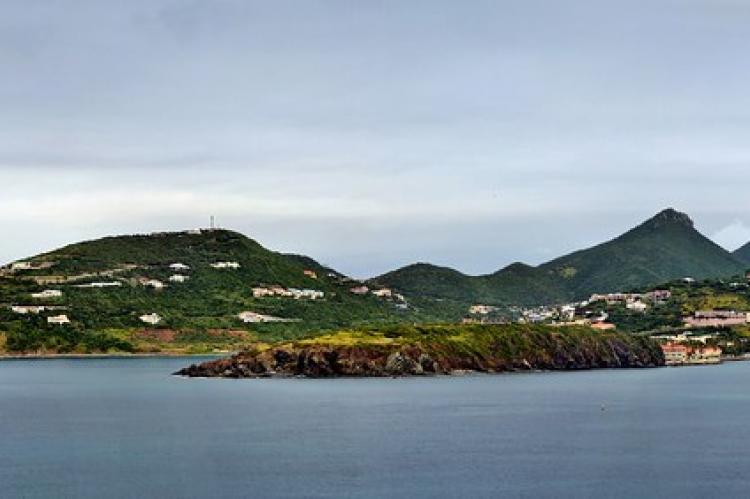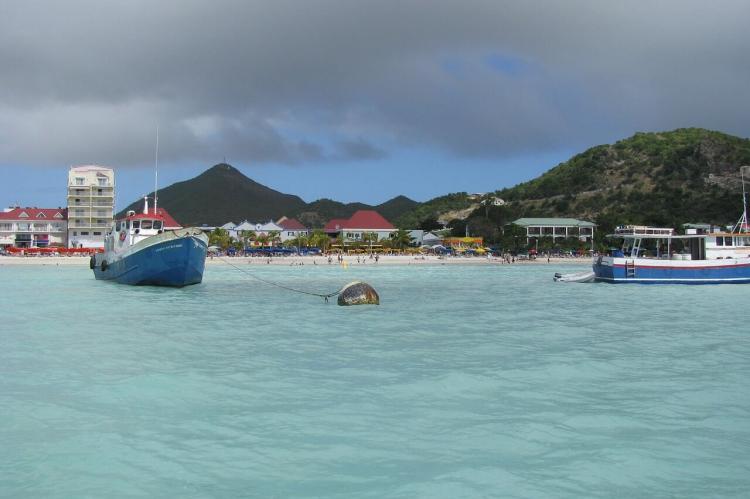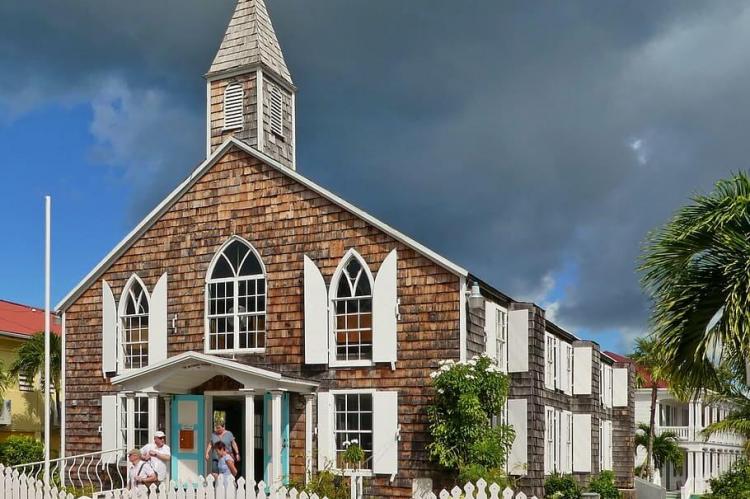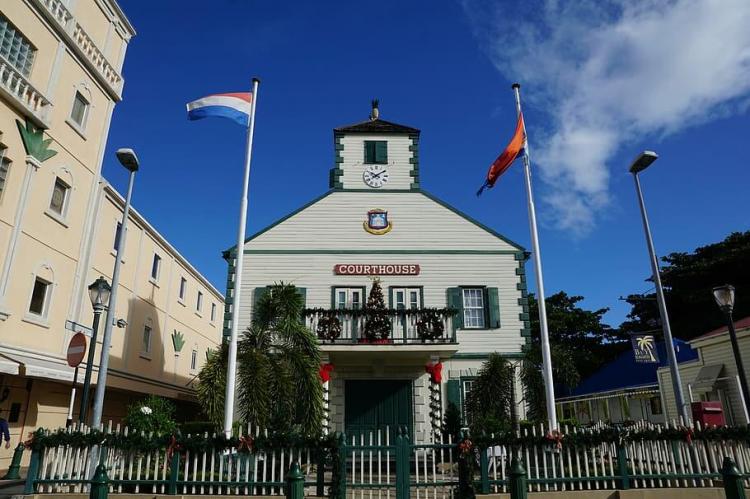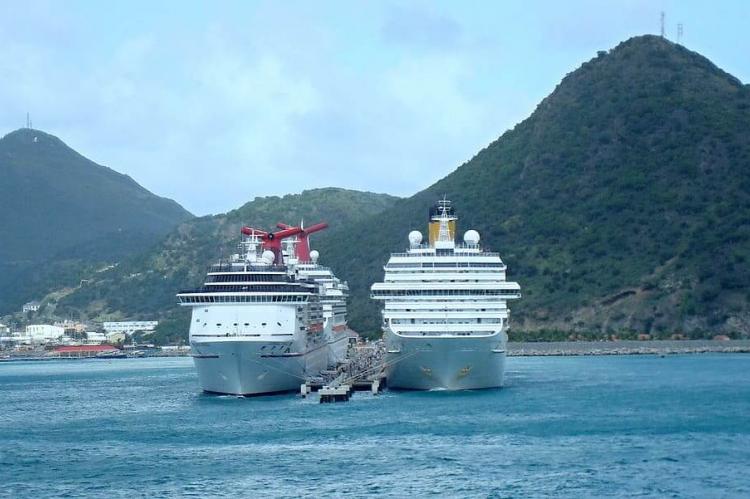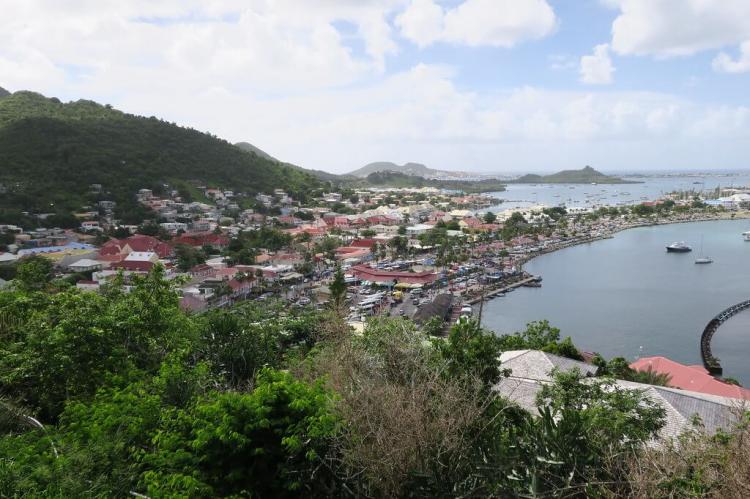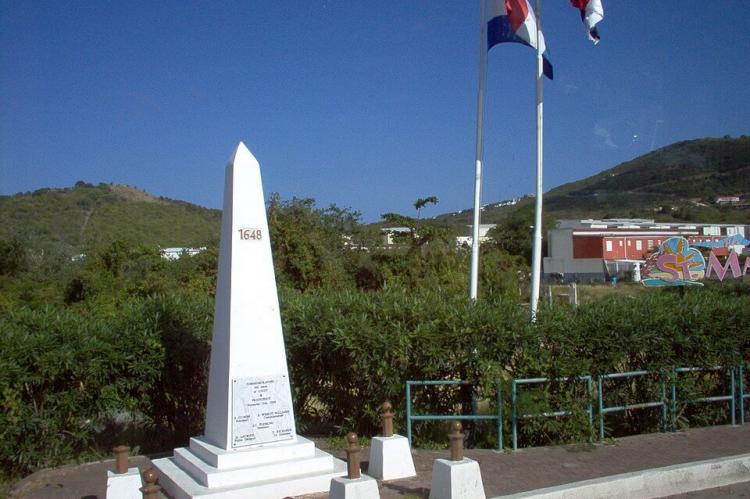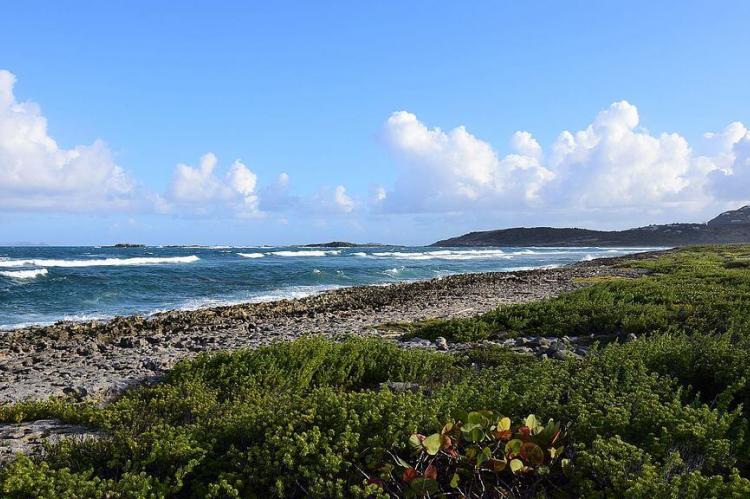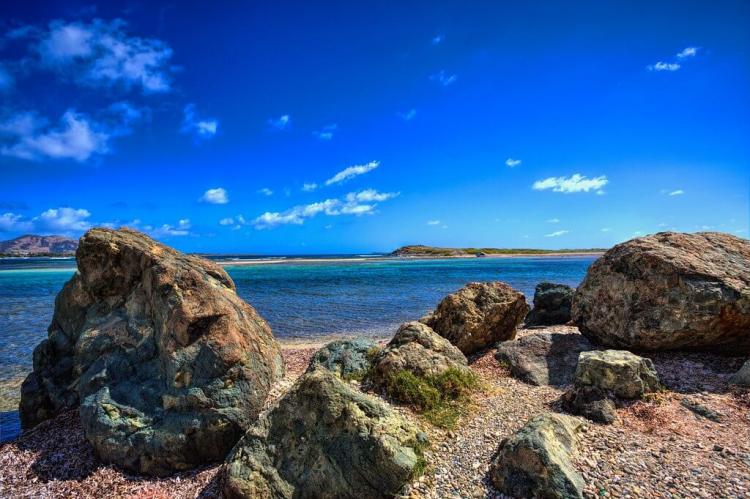Saint Martin: Where Nature and Culture Converge
Saint Martin is a beautiful island in the northeastern Caribbean Sea, shared between French and Dutch territories. It offers a fusion of natural beauty, rich cultural heritage, and a vibrant melting pot of diverse influences. Visitors can enjoy sun-drenched beaches, vibrant traditions, and architectural wonders.
The Island of Saint Martin: Where Nature and Culture Converge
Nestled in the northeastern Caribbean Sea, the island of Saint Martin stands as a captivating fusion of natural beauty, rich cultural heritage, and a vibrant melting pot of diverse influences. This tropical paradise, shared between the French and Dutch territories, beckons visitors to explore its multifaceted charms, where the allure of sun-drenched beaches meets the enchantment of vibrant traditions and architectural wonders.
Geographic Location and Overview
Saint Martin occupies a coveted location at the northern end of the Leeward Islands group in the Lesser Antilles. It lies south of Anguilla, separated by the narrow Anguilla Channel, and northwest of the French territory of Saint Barthélemy, across the Saint-Barthélemy Channel. Neighboring islands such as Saba, Sint Eustatius ("Statia"), and the independent nation of Saint Kitts and Nevis are visible on clear days, adding to the island's picturesque setting.
With an area of approximately 87 square kilometers (34 square miles), the island is divided roughly 60/40 between France and the Netherlands. The northern and slightly larger French part, known as the Collectivity of Saint Martin, is an overseas collectivity of France and an integral part of the European Union. The southern and slightly smaller Dutch part, Sint Maarten, is one of four constituent countries that form the Kingdom of the Netherlands.

Saint Martin location map.
Topography and Natural Landscapes
The island of Saint Martin boasts a diverse and captivating topography, extending approximately 12 miles (19 km) from north to south and east to west. A striking feature is the narrow, looping sand spit that extends westward from the hilly main part of the island, creating a stunning visual contrast against the azure waters of the Caribbean Sea.
Saint Martin's coastline is a true feast for the senses, offering various landscapes, from rugged and coral-ringed shores to pristine white sandy beaches. These beaches are punctuated by vibrant splashes of color from the sea grapes, coconut trees, and swaying palm trees that line the shoreline, creating a quintessential tropical paradise.
The island's volcanic and mountainous terrain contributes to its diverse natural beauty. Pic Paradis, located on the French side, rises to an impressive elevation of 424 meters (1,391 feet). This majestic peak reminds us of the island's geological heritage and provides stunning vistas for hikers and nature enthusiasts.
Biodiversity and Conservation Efforts
Saint Martin is a true haven for nature lovers, boasting a rich array of flora and fauna that showcases the island's unique biodiversity. From the vibrant hibiscus and yellow sage (featured on the island's flag) to the majestic mahogany trees and cacti that dot the landscape, the island's plant life is a kaleidoscope of colors and textures.
In addition to its diverse plant life, Saint Martin is home to an estimated 522 wild plant species, some of which are endemic to the region. The Calyptranthes boldinghgii and Galactia nummelaria, for instance, are considered "island-endemic," adding to the island's unique ecological tapestry, although it is suspected that they may have already gone extinct.
Recognizing the importance of preserving this natural heritage, the Saint-Martin National Nature Reserve, located in the northeastern French portion of the island, plays a crucial role in conservation efforts. This protected area, spanning an impressive 3,060 hectares (7,561 acres), aims to safeguard the island's ecosystems and natural biodiversity, ensuring that future generations can appreciate the beauty and richness of Saint Martin's plant and marine life.
Another notable conservation effort is the designation of Mullet Pond, a section of the inland Simpson Bay Lagoon on the Dutch side, as a Ramsar site since 2016. This vital wetland provides crucial habitat for mangroves, which serve as nurseries for various fish species and offer coastal protection during hurricane season. However, the area faces risks from dredging and tourism activities, underscoring the ongoing need for responsible management and preservation efforts.
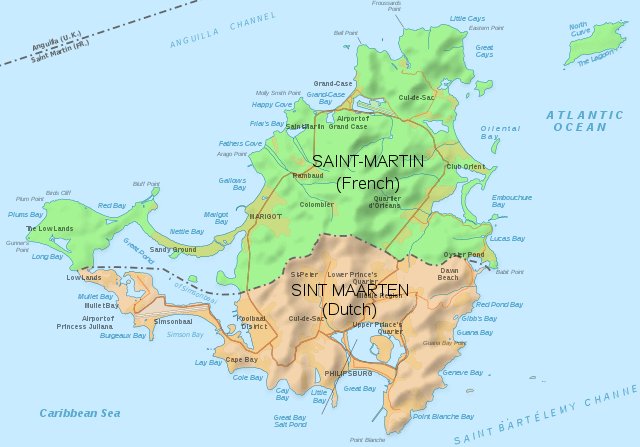
Map of the island of Saint Martin.
History and Culture
Saint Martin's rich history is deeply intertwined with the competing interests of European powers, each vying for control over this strategic Caribbean outpost. During his second voyage to the Americas, Christopher Columbus first laid eyes on the island in 1493, setting the stage for the centuries of subsequent colonial influence.
The island's unique cultural blend can be traced back to the Treaty of Concordia, signed in 1648 between the Kingdom of France and the Dutch Republic. This pivotal agreement divided the island between the two territories, laying the foundation for the distinct yet harmonious coexistence of French and Dutch influences that characterize Saint Martin today.
On the Dutch side of Sint Maarten, visitors are immersed in a vibrant atmosphere of festive nightlife, bustling casinos, and an array of jewelry shops showcasing the island's renowned craftsmanship. The local rum-based guavaberry liquors offer a taste of the island's unique flavor profile, complementing the lively ambiance.
In contrast, the French side of Saint-Martin exudes a distinct European charm, with its renowned nude beaches, high-end shopping districts, and outdoor markets brimming with local artisanal wares. The culinary scene is a true delight, with French and Indian Caribbean cuisine showcasing the island's diverse cultural influences and tantalizing the senses with a fusion of flavors.
While English is the most commonly spoken language on the island, the diverse linguistic tapestry reflects Saint Martin's multiculturalism. French is the official language on the French side, while Dutch and English hold official status on the Dutch side. Additionally, various French-based creoles, Spanish, and Papiamento, the language of neighboring islands like Aruba, Bonaire, and Curaçao, can be heard throughout the island, adding to its rich cultural mosaic.
Climate and Tourism
Saint Martin's tropical savanna climate is a significant draw for visitors seeking sun-drenched days and warm, inviting waters. The island experiences a distinct dry season from January to April and a rainy season from August to December, with an average yearly rainfall of 1,047 mm (41.2 in). Temperatures remain steady throughout the year, with an average mean temperature of 27.2°C (81°F), mirroring the consistently comfortable sea temperature.
Tourism is the lifeblood of Saint Martin's economy, and it's easy to see why this island paradise captivates visitors worldwide. From the allure of its pristine beaches and vibrant nightlife to its rich cultural offerings and outdoor adventures, Saint Martin caters to a diverse range of interests and lifestyles.
Whether seeking relaxation on secluded coves, exploring the island's rich history and architecture, or indulging in the local culinary delights, visitors to Saint Martin will create lasting memories amidst the island's natural and cultural splendor.
Conclusion
Saint Martin, a true Caribbean gem, captivates with its unique blend of natural wonders, rich cultural heritage, and a delightful fusion of French and Dutch influences. From its diverse landscapes and thriving biodiversity to its vibrant cultural tapestry and thriving tourism industry, this island paradise offers an unforgettable experience for visitors seeking a taste of the Caribbean's natural and cultural splendor. With its strategic location, stunning scenery, and warm hospitality, Saint Martin beckons travelers to immerse themselves in its enchanting embrace, where the allure of paradise awaits.

